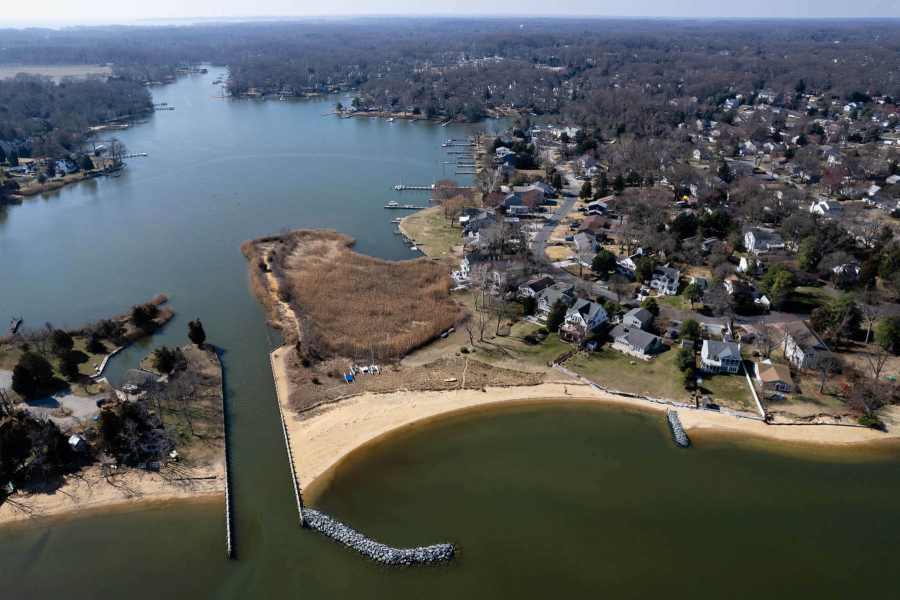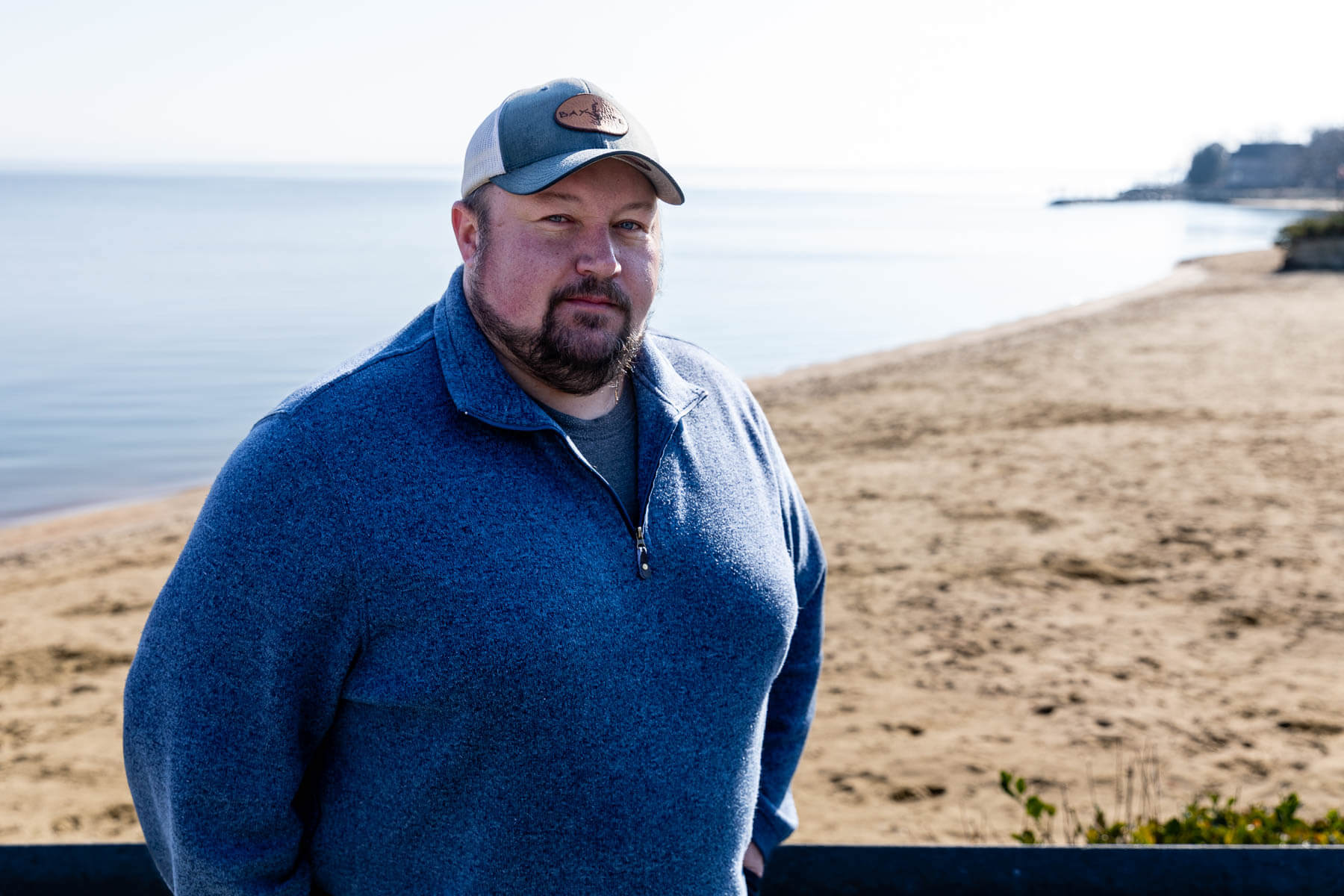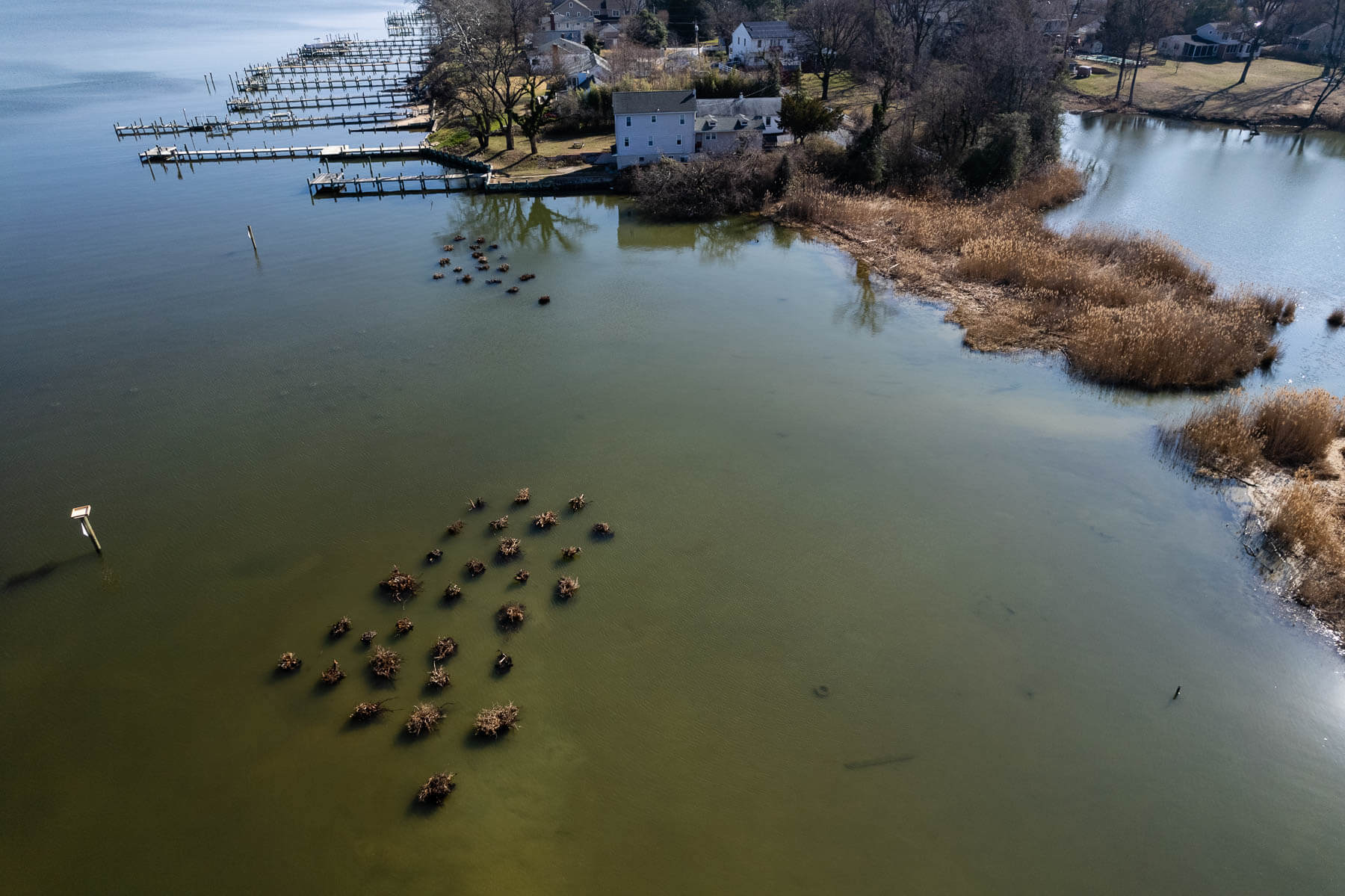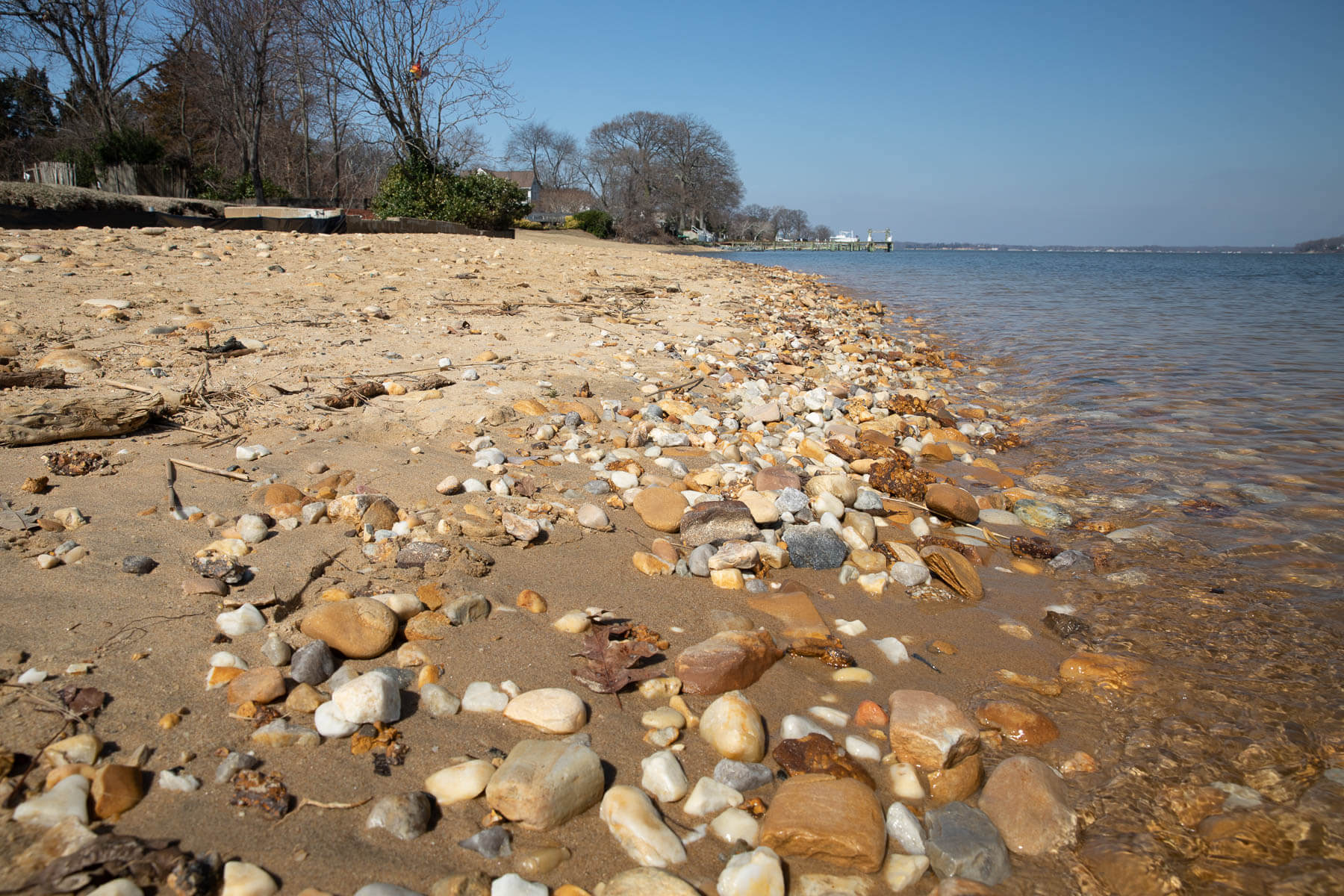A thoughtful approach to restoration is giving one community more days at the beach

Ask 35-year Cape St. Claire resident Beau Breeden about the central feature of his community, and he’ll point you to its main beach, a long and sandy shoreline where the suburb of Annapolis faces the mouth of the Magothy River and overlooks the upper Chesapeake Bay. For decades it’s been a central spot for summer activities.
“It's how you develop sort of a love for the Bay,” Breeden said. “You have a grand old time swimming with your friends, fishing and crabbing on weekends and eating that food—it creates those memories that you don't forget for a lifetime.”
Over Beau’s lifetime, however, Cape St. Claire’s main beach has been losing land to erosion. Its expansive views of the northeast portion of the Bay give wind-driven waves 33 unobstructed miles to gain strength. Rising waters and ever-stronger storms have caused the beach to lose up to three feet of shoreline in a year.
“Storms have certainly altered the pace in which erosion was occurring,” Breeden said.
Breeden serves on the board of the Cape St. Claire Improvement Association (CSCIA). Beginning as early as 2007, the CSCIA began seeking input from residents and evaluating restoration options for its main beach as well as one nearby along Deep Creek, at a thin stretch of land separating the creek from Lake Claire. A traditional beach replenishment project—simply pumping sand back onto the shoreline—would leave it vulnerable to the same forces of erosion. Laying down tons of large stone offshore would have blocked the view along the beach. Eventually, after consulting with Biohabitats, Inc., a local environmental engineering firm, the community settled on a more environmentally-sound shoreline stabilization approach known as living shorelines.

Living shorelines take many forms and can encompass a variety of practices, but generally they are constructed with gentle slopes and natural materials, mimicking nature in order to allow a shoreline to replenish itself over time.
Rather than reflecting wave energy back out into open water like a bulkhead or other hardened shoreline structures, living shorelines are instead designed to absorb waves, providing wildlife habitat and shoreline protection. They are designed to last longer than hardened shorelines that may provide protection in the short-term but that can create other problems.
“You can't restore a 1980 beach in the present day,” Breeden said. “These hardened embankments of the last 50 years have potentially caused damage and we need to change that—and we have this opportunity.”
Because living shoreline projects create wildlife habitat and benefit the health of the Chesapeake Bay, they offer the chance to secure grant funding that a traditional beach replenishment project would not qualify for.
Breeden said the community eventually realized the complexity of the projects it needed to pursue, and the challenges of fundraising as well as coordinating with agencies at the federal and state level. In 2018, after struggling to secure grants on its own, the CSCIA partnered with the nonprofit Alliance for the Chesapeake Bay (ACB), which also provided technical support. ACB helped secure over $900,000 in matching funds through several grants from the Chesapeake Bay Trust, Anne Arundel County Bureau of Watershed Protection and Restoration, State of Maryland and U.S. Fish and Wildlife Service. After two years of navigating permits, construction began in 2021.
“These are projects that are designed to withstand the test of time and designed to withstand damage from increasing storms, from climate change,” said Laura Todd, manager of Cape St. Claire’s projects for ACB.
On the main beach, a 970-foot living shoreline is protected on one end by a headland breakwater made of stone riprap, which has created a cove where sand can accumulate, creating marsh wetlands, upland dune habitat and recreational space, Breeden said. After being built up by dredged sand, the beach is being further stabilized by thousands of planted marsh plants and native dune grasses. Small cobblestone added to the beach in front of waterfront homes is able to shift with wave action, a technique developed in recent years to allow a shoreline to respond to rising sea level.
“I think we're more resilient for the future in holding that beach in place, which is the long-term goal,” Breeden said.

Along Lake Claire, an 80-foot groin was installed to shield the shoreline from high boat traffic coming from a nearby marina. To help calm the water, ACB also put in concrete oyster reef balls and root wads—large, inverted tree trunks with the bare roots pointing skyward.
“As the waves come through and there's a structure under the water to help break it some, it breaks,” Breeden said. “It’s almost like an offshore sandbar.”
The reefs will eventually be seeded with baby oysters, and both the reef balls and the root wads create underwater habitat for fish and other species near existing mussel and clam beds. Breeden said he’s seen birds attracted to the tops of the root wads, which rise above the water at low tide. And sand is expected to fill in behind the added structures, creating more of a wetland marsh area.
Both projects are a “win-win” for wildlife and recreation, Breeden said. And with Cape St. Claire being such an avid boating community, another added benefit of the projects was that they reused sand that had to be dredged from the Magothy’s boating channels anyway. Without a project or a buyer in place, the community would have had to pay someone to haul the sand away.

Just weeks before construction was complete, a strong storm in the fall of 2021 delivered the area’s second-highest high tides on record. The storm caused the loss of piers and bulkheads on shoreline properties along the Magothy and provided a reminder of the shoreline projects’ importance.
“I think it may not have been as disastrous, had some of the features been in place,” Breeden said. “But that’s for the science community [to determine].”
Construction was ultimately completed between December 2021 and February 2022. Additional plantings in early 2022 will help further stabilize the shoreline and replace a small number of plants lost to pedestrian traffic.
After a years-long effort, Breeden said that the community has developed a sense of pride in the projects it has developed, and that similar efforts to improve the Chesapeake Bay for generations to come should start at the local level.
“It's going to take communities stepping up and tackling their little piece of the waterway and improving it in order to make it happen.”

Comments
There are no comments.
Thank you!
Your comment has been received. Before it can be published, the comment will be reviewed by our team to ensure it adheres with our rules of engagement.
Back to recent stories